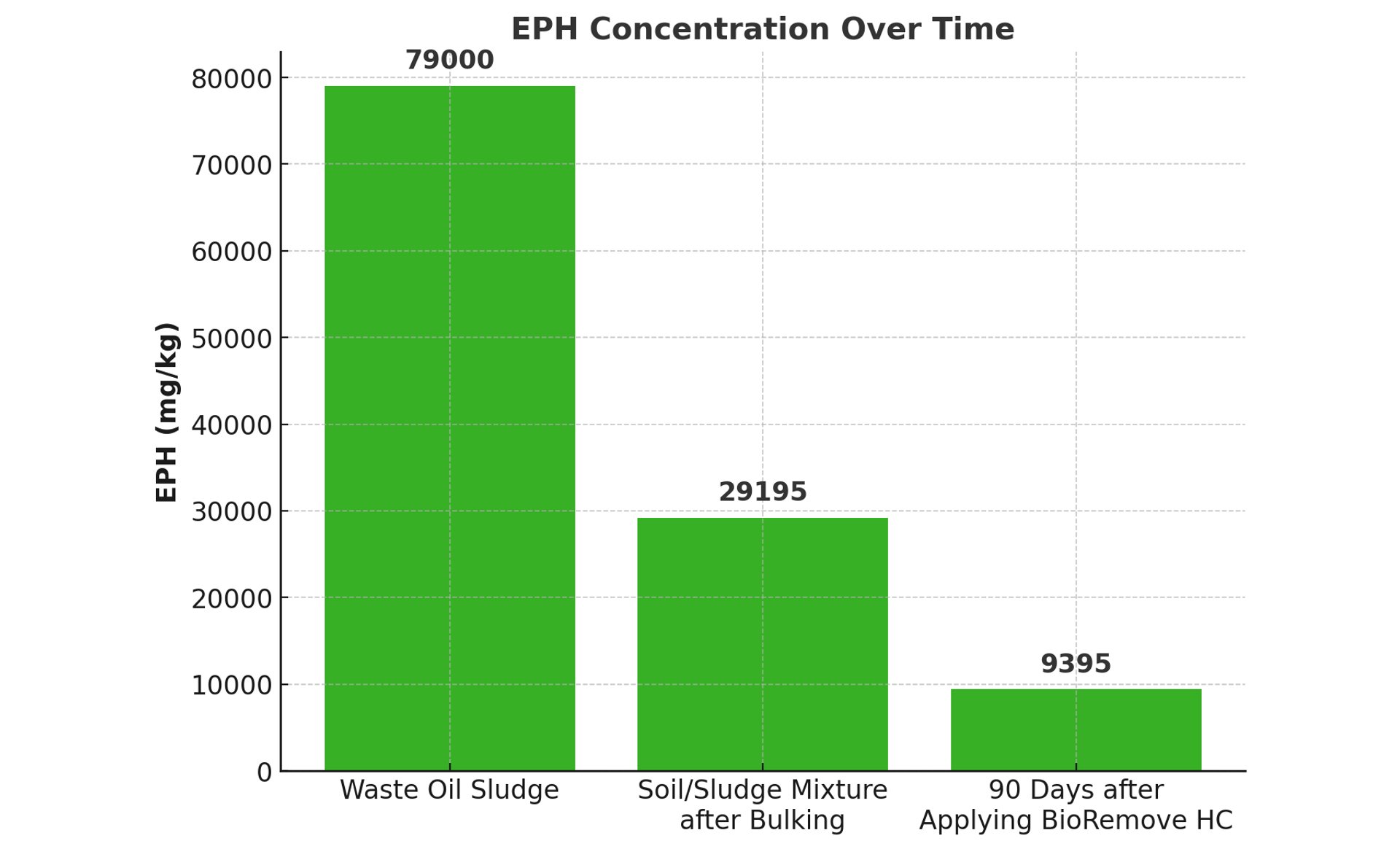
Rapid Bioremediation of Refinery Sludge with BioRemove HC
Background
A crude oil refinery in Central America needed to remove 7,300 yd³ (5,580 m³) of oily sludge that had collected in waste reservoirs over an 8-year period. The sludge had an extractable petroleum hydrocarbon (EPH) concentration of 79,000 mg/kg that consisted primarily of C₁₄ to C₄₀ hydrocarbons. A US engineering firm acted as lead consultant for the project and investigated bioremediation strategies with EnviroZyme as an alternative to disposal in an environmental landfill or incineration.
Solution
The goal for the project was to reduce the average EPH concentration below 10,000 ppm as quickly as possible. Since long-chain hydrocarbons are difficult and often slow to degrade, it was felt that bioaugmentation was necessary to ensure that a capable population of bacteria existed in the soil. EnviroZyme recommended BioRemove HC, a blend of selectively adapted bacterial cultures that is particularly effective at degrading diesel range organics with additional effectiveness in degrading longer-chain aliphatic hydrocarbons.
2 land treatment cells (LTCs), 1 to 2 acres (0.4 - 0.8 ha) in size, were constructed adjacent to the waste reservoirs. The petroleum sludge was dredged, mixed with soil, lime, and Portland cement for bulking and stabilization, and then spread in the LTCs for biological treatment. The mixture was graded, tilled, and treated with nitrogen- and phosphorous-based fertilizers prior to the application of 3,500 pounds (1,580 kg) of dry BioRemove HC. The product was rehydrated with water immediately and thoroughly tilled into the soil. After the initial inoculation, the soil was tilled at least weekly to provide mixing and oxygen for the bacteria.
Results
The baseline EPH concentration of the sludge/soil mixture averaged 29,195 ppm at the time BioRemove HC was applied. At the 90-day sample date, the average EPH concentration had already decreased to 9,395 ppm. Out of 20 samples analyzed, only 3 “hot spots” that had been water-saturated during much of the 90-day period were still above the 10,000-ppm limit. The project was closed following a brief period of concentrated tilling to oxygenate the soil in these areas.

